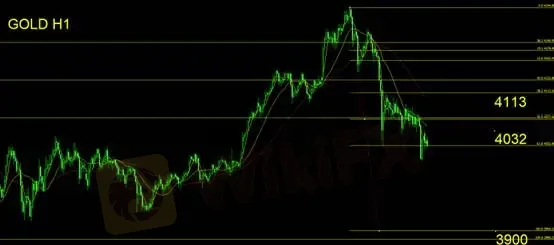Risk Assets Enter “Red Packet Season,” but Volatility Is Rising
Abstract:Every fourth quarter, the U.S. holiday shopping season typically overlaps with Chinas Lunar New Year, creating a cyclical boost in equities — what traders often call the “Red Packet Rally.”However, th
Every fourth quarter, the U.S. holiday shopping season typically overlaps with Chinas Lunar New Year, creating a cyclical boost in equities — what traders often call the “Red Packet Rally.”
However, this years outlook is far less straightforward.
Recent macroeconomic data paints a confusing picture: inflation shows no consistent trend, the labor market is gradually softening, yet tech and large-cap U.S. stocks continue to prop up the indices.
To gauge the true state of end-demand, the most crucial indicators ahead will be CPI and retail sales, which remain two of the few windows still reflecting real consumer demand.
1. The Contradiction: Weak Fundamentals, Rising Markets
Between August and October, my view on capital markets turned cautious, yet the third quarter rally defied expectations and kept climbing — making investors even more wary.
Seasonally, the fourth quarter is rarely bearish, but the market noise and complex structure this year suggest the “Red Packet Rally” might not follow its usual historical script.
Interestingly, electricity consumption in the U.S., Japan, and South Korea has outpaced real GDP growth, driven mainly by the surging power demand from AI data centers. This has turned “rising household electricity prices” into a real inflation pain point.
This falls under the category of inelastic spending —
Essential consumption
Cannot be deferred
Still purchased even when prices rise
2. Sector Spotlight: Memory Chips Lead, but Fundamentals Diverge
3. Market Outlook: Seasonal Strength Meets Structural Uncertainty
Gold Technical Analysis
Risk Disclaimer
And because of that, the Fed is neither able nor willing to cut rates just to offset higher living costs. Its mandate isn‘t to make life cheaper — it’s to control demand so inflation returns to target. Only when end-demand clearly cools will the Fed have room to cut rates. Otherwise, higher energy prices could delay the timing of any rate cuts.
Memory remains the strongest theme in Q4, yet the sectors fundamentals are far from uniform.
TrendForce has revised down its 2026 shipment forecasts for smartphones and laptops — from +0.1% and +1.7% growth to –2% and –2.4%, signaling that consumer electronics are still in decline.
While memory accounts for 10–20% of consumer electronics costs, its share in automotive, home appliances, industrial control, and IoT devices is minimal. Thus, price hikes in memory chips barely affect demand in those areas.
For consumers, however, higher memory prices remain an added burden — yet for the stock market, they have fueled a highly concentrated thematic rally.
This has created a clear divergence between the real economy and market sentiment.
U.S. consumption is being driven primarily by the top 20% of high-income households benefiting from the wealth effect. As long as the stock market holds, this group will keep spending.
But once equities correct, this same 20% could rapidly pull back on spending.
Business inventories remain stable for now, giving a sense of calm — but its still uncertain where the next snowball might start rolling.
Historically, Q4 tends to be bullish.
Yet the macro backdrop this year is murky: data is noisy, inflation remains sticky, and the timing of rate cuts is still uncertain.
Current spending power still relies heavily on the wealth effect.
The market may continue rising, but volatility will likely intensify.
The key question isn‘t whether the market will go up — it’s how fast it will fall once momentum fades.

Gold continues its downward trajectory, showing a clear pattern of lower highs and lower lows.
Traders should look to sell on rallies, as the current move appears to be part of a broader downtrend.
Using Fibonacci projections, the next minor downside target lies near $3,900.
The daily chart has printed four consecutive bearish candles, and the bulls defense line should now retreat to test the late-October low.
From a moving average perspective, prices are undergoing a mean-reversion correction toward the annual line, currently near $3,950.
Intraday traders should avoid attempting premature long positions.
Stop-loss: $30
Support: $3,900
Resistance: $4,032 / $4,113
The above viewpoints, analyses, research, prices, or other data are provided solely for general market commentary. They do not represent the views of this platform. All readers should assume full responsibility for their own trading decisions. Please exercise caution.
WikiFX Broker
Latest News
Trillium Financial Broker Exposed: Top Reasons Why Traders are Losing Trust Here
FIBO Group Ltd Review 2025: Find out whether FIBO Group Is Legit or Scam?
Amillex Withdrawal Problems
Is INGOT Brokers Safe or Scam? Critical 2025 Safety Review & Red Flags
150 Years Of Data Destroy Democrat Dogma On Tariffs: Fed Study Finds They Lower, Not Raise, Inflation
CQG Partners with Webull Singapore to Power the Broker’s New Futures Trading Offering
【WikiEXPO Global Expert Interviews】Ashish Kumar Singh: Building a Responsible and Interoperable Web3
Trump: India\s US exports jump despite 50% tariffs as trade tensions ease
IEXS Review 2025: A Complete Expert Analysis
CySEC Flags 21 Unauthorized Broker Websites in 2025 Crackdown
Rate Calc


